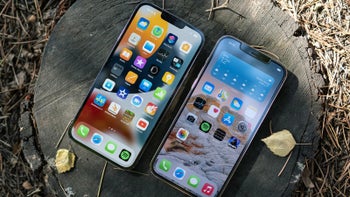Unsanctioned changes in the iPhone 13's display design forced Apple to halt orders from BOE

Faced with the industry's infamous shortage of components due to a perfect storm of supply chain factors, one of Apple's OLED display suppliers - BOE - decided to wing it and change the panel design on its own volition in order to remain in the game, reports The Elec.
Apple needed about 50% more iPhone OLED panels last year when compared to 2020. Of those, just about 65% have been of Samsung making, a huge drop from the 78% the previous year. The rest came from LG and BOE, and, in the case of LG, the batch was said to be about 50 million units, or double the 25 million that it supplied in 2020.
Until the iPhone 12 batches, Apple had only rarely tested the waters with LG OLED displays, as small and medium sized ones are not the company's strong suit, unlike big TV panels. Instead, it relegated LG to secondary display supply functions for iPhone screen replacements or wearables like the Apple Watch.
BOE was also in the running for the 6.1" iPhone 12's OLED display, but used to deliver poor yields with sufficient quality, leaving Apple with only Samsung and a sprinkle of LG as OLED production sources.
Back in 2021, however, the iPhone 13 and iPhone 12 units in circulation were graced with much more panels that are not of Samsung origin, and that trend only intensified going forward, until Apple decided to minimize the panels it gets from BOE this year.
BOE gradually worked its way up the iPhone's screen supply chain by first providing replacement OLED panels for repairs, then wiggled its way into the iPhone 12 and iPhone 13 display supply chain, until it was tasked to provide 40 million screens to Apple this year.
It will now provide a fraction of that amount as Apple is said to have halted orders from BOE since at least February. One of the reasons is reportedly the changing of the iPhone's OLED display design that BOE decided to undertake when it was faced with a dearth of display driver IC (DDI) components.
Apparently, the screen maker slightly altered the display driver's design "to make the panel thin film transistor (TFT) circuit width slightly wider" and catch up with its iPhone 13 panel production orders.
Apple caught wind of the changes, report the industry insiders, and started decreasing the market share of BOE in its display supply chain by redirecting DDI components to LG, the other screen supplier that it diversifies from Samsung's OLED monopoly with.
It's precisely Samsung Display's patents that could have been the other reason for BOE's search of a workaround, as it recently became clear that Samsung may have notified Apple that BOE is infringing on its pixel structure and touch electrode OLED patents.
In any case, it looks like BOE will struggle with its iPhone display production targets this year and may put its plans to wiggle into the iPhone 15 Pro series screen supply chain on the backburner.
Apple may be back to square two with iPhone OLED display supply alternatives
Just around the iPhone 11's time, Apple tried again to move away from Samsung by probing LG and BOE yet their yield wasn't nearly enough for anything but small batches or repair parts, so Samsung again got the lion's share of iPhone OLED supply orders.
The drama comes just when the OLED display spell that Samsung cast over Apple's iPhones was finally beginning to crack, as, according to the same Elec's source, last year LG doubled its OLED screen supply to Apple, and even the scruffy BOE supplier was getting a single digit piece of the pie, all at the expense of Samsung Display.
Apple needed about 50% more iPhone OLED panels last year when compared to 2020. Of those, just about 65% have been of Samsung making, a huge drop from the 78% the previous year. The rest came from LG and BOE, and, in the case of LG, the batch was said to be about 50 million units, or double the 25 million that it supplied in 2020.
BOE was also in the running for the 6.1" iPhone 12's OLED display, but used to deliver poor yields with sufficient quality, leaving Apple with only Samsung and a sprinkle of LG as OLED production sources.
Back in 2021, however, the iPhone 13 and iPhone 12 units in circulation were graced with much more panels that are not of Samsung origin, and that trend only intensified going forward, until Apple decided to minimize the panels it gets from BOE this year.
Whether because of the component supply issues, the unauthorized panel redesigns, or Samsung's patent worries, the running drama with BOE's iPhone display production schedule is returning Apple back to square two in terms of diversification away from Samsung.










Things that are NOT allowed: